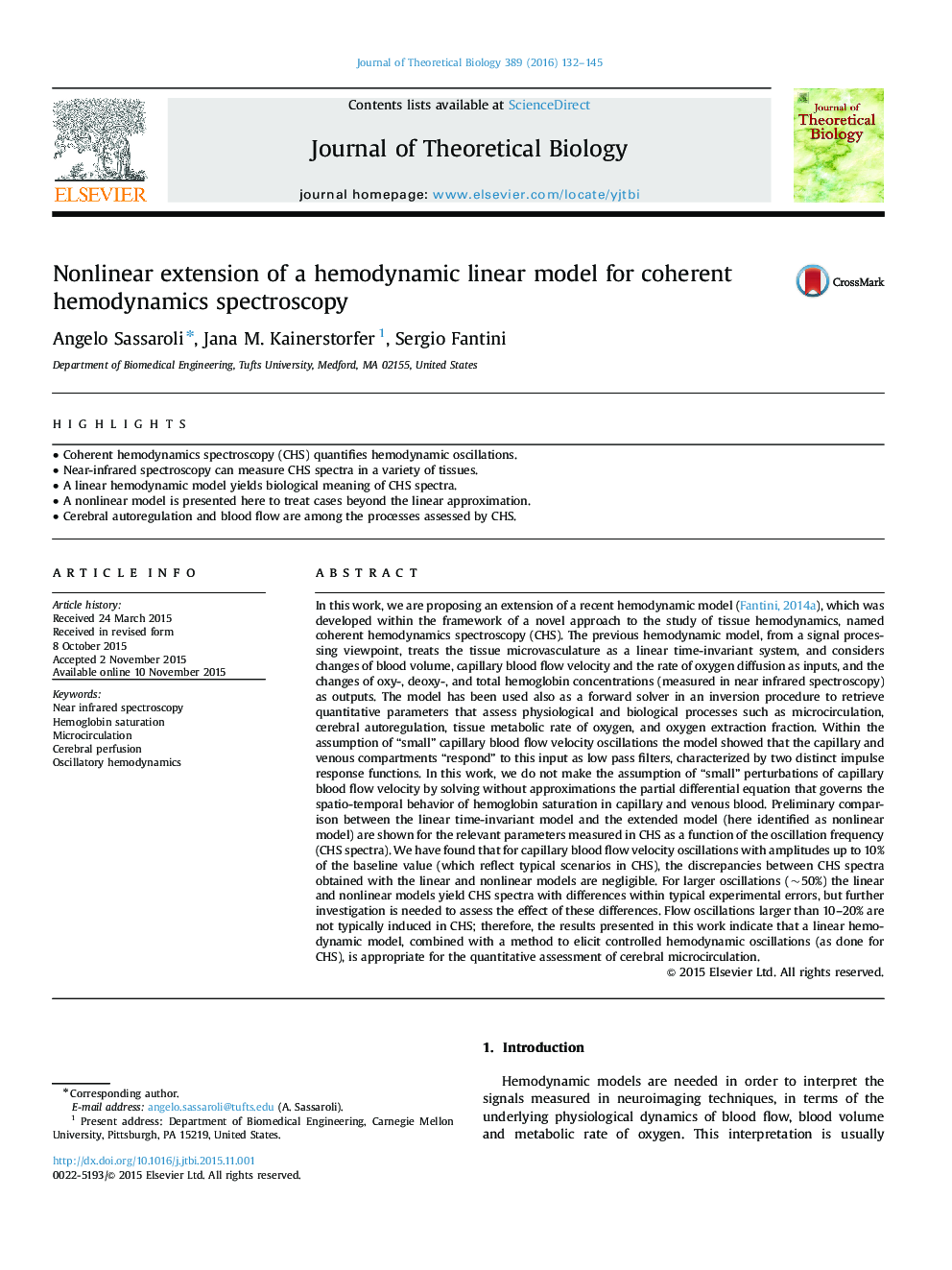| Article ID | Journal | Published Year | Pages | File Type |
|---|---|---|---|---|
| 6369363 | Journal of Theoretical Biology | 2016 | 14 Pages |
â¢Coherent hemodynamics spectroscopy (CHS) quantifies hemodynamic oscillations.â¢Near-infrared spectroscopy can measure CHS spectra in a variety of tissues.â¢A linear hemodynamic model yields biological meaning of CHS spectra.â¢A nonlinear model is presented here to treat cases beyond the linear approximation.â¢Cerebral autoregulation and blood flow are among the processes assessed by CHS.
In this work, we are proposing an extension of a recent hemodynamic model (Fantini, 2014a), which was developed within the framework of a novel approach to the study of tissue hemodynamics, named coherent hemodynamics spectroscopy (CHS). The previous hemodynamic model, from a signal processing viewpoint, treats the tissue microvasculature as a linear time-invariant system, and considers changes of blood volume, capillary blood flow velocity and the rate of oxygen diffusion as inputs, and the changes of oxy-, deoxy-, and total hemoglobin concentrations (measured in near infrared spectroscopy) as outputs. The model has been used also as a forward solver in an inversion procedure to retrieve quantitative parameters that assess physiological and biological processes such as microcirculation, cerebral autoregulation, tissue metabolic rate of oxygen, and oxygen extraction fraction. Within the assumption of “small” capillary blood flow velocity oscillations the model showed that the capillary and venous compartments “respond” to this input as low pass filters, characterized by two distinct impulse response functions. In this work, we do not make the assumption of “small” perturbations of capillary blood flow velocity by solving without approximations the partial differential equation that governs the spatio-temporal behavior of hemoglobin saturation in capillary and venous blood. Preliminary comparison between the linear time-invariant model and the extended model (here identified as nonlinear model) are shown for the relevant parameters measured in CHS as a function of the oscillation frequency (CHS spectra). We have found that for capillary blood flow velocity oscillations with amplitudes up to 10% of the baseline value (which reflect typical scenarios in CHS), the discrepancies between CHS spectra obtained with the linear and nonlinear models are negligible. For larger oscillations (~50%) the linear and nonlinear models yield CHS spectra with differences within typical experimental errors, but further investigation is needed to assess the effect of these differences. Flow oscillations larger than 10-20% are not typically induced in CHS; therefore, the results presented in this work indicate that a linear hemodynamic model, combined with a method to elicit controlled hemodynamic oscillations (as done for CHS), is appropriate for the quantitative assessment of cerebral microcirculation.
